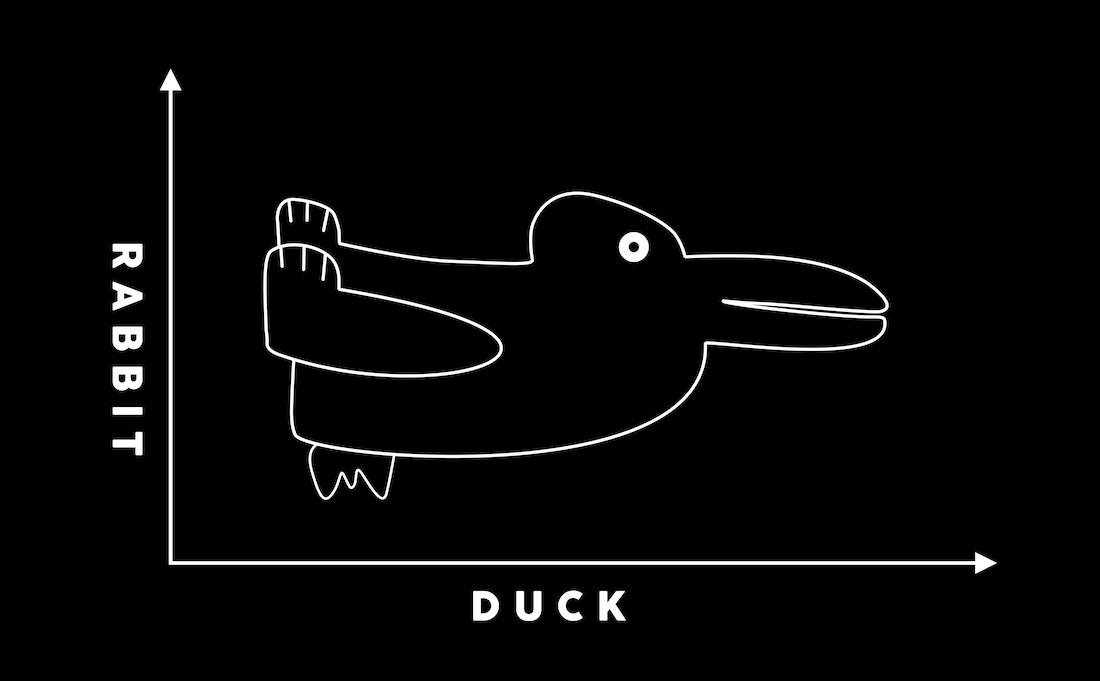The art of asking the right questions

- Children are question-asking savants, but adults often lose their affinity for the inquisitive.
- Asking questions helps us organize our thinking around what we don’t know.
- As with any art or skill, it requires practice and commitment to ask the right questions.
Many people, myself included, can find asking questions to be daunting. It fills us with worry and self-doubt, as though the act of being inquisitive is an all-too-public admission of our ignorance. Unfortunately, this can also lead us to find solace in answers — no matter how shaky our understanding of the facts may be — rather than risk looking stupid in front of others or even to ourselves.
But once upon a time, we were all questing-asking savants. We started grilling our parents as toddlers, and by preschool, our epistemic inquiries plumbed the depths of science, philosophy, and the social order. Where does the sun go at night? How come zippers stay zipped? Why doesn’t that man have a home like we do? Why do rocks sink but ice floats? Is the blue you see the same blue I see?
While it’s long been thought that children’s never-ending whys were an attention-seeking strategy, recent research suggests that they are genuinely curious and their questions influence their subsequent thinking. Then, at some point, our interrogative urges peter out.
That’s a problem because, as journalist Warren Berger puts it: “In a time when so much knowledge is all around us, answers are at our fingertips, we need great questions in order to be able to know what to do with all that information and find our way to the next answer.”
None of which is cause for defeatism. No matter our age, the art (and skill) of asking the right question is neither dead nor lost to us. It has, at worst, merely gone dormant. We simply need to find ways to revitalize it.
Support an inquisitive environment
Why does the child’s impulse to ask questions grow idle in so many adults? Like most questions of behavior, the answer is variable and multiply determined, but I think an important factor is how the social environments surrounding us change as we age.
Schools transform from a place for asking questions to a place funded by our ability to answer them. We learn to sell ourselves on the job market by what (and who) we know, not what we don’t. And we recognize that society rewards the people who propose to have the answers, no matter how far-fetched those solutions might be.
As such, one way to revitalize our curiosity is simply to change the script. We can be bolder about asking questions in public and encouraging others to pursue their curiosity, too. In that encouragement, we help create an environment where those around us feel safe from the shame and humiliation they may feel in revealing a lack of knowledge about a subject, which can round back to us.
“It is a superpower. In a world that is governed by shame and perhaps political correctness, more and more people are not saying what’s on their mind. They’re not asking what’s on their minds. And the questions here are the most powerful,” entrepreneur Tim Ferriss said in an interview.
Ask the right questions
At some point, we’ve all had a teacher, parent, or manager tell us, “There are no stupid questions.” Even Carl Sagan voiced the sentiment, in the Demon-Haunted World.
But just because a question can’t be stupid doesn’t mean it can’t be snide, snarky, sarcastic, condescending, disregarding, or downright nasty. Here lies the dividing line between a “right” question and a “wrong” one.
A wrong question is one proffered for rhetorical flavor or flair. Its goal is not to open you to exploration or sate your curiosity. It’s to either win an argument or force someone to provide the information you already know. In short, if you’re asking a question like a lawyer, you’re doing it wrong. (Unless, of course, you are a lawyer.)
A right question is any question that enlivens you, comes from a place of honest curiosity, and, as Berger notes, helps you to organize your thinking around what you don’t know.
Until they discover sarcasm, children are naturally drawn to these kinds of questions. It’s one reason their whys never come a la carte but are bundled together in a dynamic chain. Their seemingly never-ending follow-ups aren’t rhetorical tricks designed to trip up adults and reveal them to be ignorant of basic truths; they are genuinely and unabashedly interested in learning as much about a subject as they can.
Their aim is simply to feel what physicist Richard Feynman calls “the kick in the discovery.”

Get back to the basics
Even if we desire that kick, we have an unfortunate habit of overestimating our knowledge of any given subject, and this illusion of knowledge may lead to assumptions and false beliefs infecting our thought processes.
One way to weed those out is to begin with the most basic question we can formulate. Conceptual artist Jonathon Keats calls these “naive questions.” Geochemist Hope Jahren calls them “curiosity questions.” Whatever the label, they are, in essence, the kind of question a child could come up with.
Progressing from such questions requires us to dig deeper and slow down our thinking — which, in turn, may reveal to us unknown unknowns or information we may have missed last time we explored the topic.
Consider interpersonal relationships. Robert Waldinger, director of the Harvard Study of Adult Development, recommends a concept called “radical curiosity” whenever you want to connect with someone. Start by asking simple questions: How are they feeling today? What are they into? How has work been lately?
Even these “small talk” questions can elicit a lot of information if you’re paying attention, and you can use that to steer the conversation to deeper, more personal places to reveal previously unexplored depths in the person — whether it’s a new relationship or a lifelong partner.“
The crucial point is that being curious helps us connect to others, and this connection makes us more engaged with life. Genuine curiosity invites people to share more of themselves with us, and this, in turn, helps us understand them. This process enlivens everyone involved,” Waldinger and Schulz write in The Good Life.
Practice asking questions
When it comes to how we phrase and sequence questions, there are few, if any, hard-and-fast rules. Honesty and curiosity are the main things.
With that said, Alison Wood Brooks and Leslie K. John, associate professor and professor of business administration, respectively, do recommend some best practices. They advise you to open with less sensitive questions, favor follow-up questions, keep questions open-ended, engage in a casual tone, pay attention to group dynamics, and, of course, listen intently.
“The good news is that by asking questions, we naturally improve our emotional intelligence, which in turn makes us better questioners — a virtuous cycle,” they write in the Harvard Business Review.
These suggestions will serve you most of the time, but Brooks and John do warn that there are circumstances when they won’t be applicable (such as during intense negotiations or, again, if you’re a lawyer).
You can also practice asking questions of and for yourself. Ferriss recommends keeping a running list of questions in a journal. These questions could be self-reflective, they could prime future research, or they may simply be musings that you need to jot down while the neurons are hot.
Journaling not only removes the publicity from question asking, but it also offers you a place to experiment. Even if 90% of your journaled questions are garbage, Ferriss said, and only 10% are worth following up on, that’s a great success rate.
Finally, Ferriss also encourages you to set aside time to ask fantastically absurd questions. How would you accomplish a week’s work in two hours? What would you do if you won the lottery? If you could design a city from scratch, how would you? If you knew the day you’d die, how would that change your life today?
“These types of absurd questions don’t allow you to use your default frameworks for solutions. They don’t allow you to use your base of current assumptions to come up with answers. It forces you to think laterally. It forces you to break some of the boundaries on the sphere of comfort that you’ve created for yourself, and that is what makes them, I think, in a way so powerful,” Ferriss said.
Beyond the joy of discovery, know that the questions you ask are the problems you solve. They help you connect with others and strengthen those relationships. And they are also your primary means of learning about your world — both the external one surrounding you and the one internal to you. In short, asking questions is the best way to deepen your understanding of the things that matter to your life. As any child could probably tell you (if you asked).
Learn more on Big Think+
With a diverse library of lessons from the world’s biggest thinkers, Big Think+ helps businesses get smarter, faster. To access Big Think+ for your organization, request a demo.





